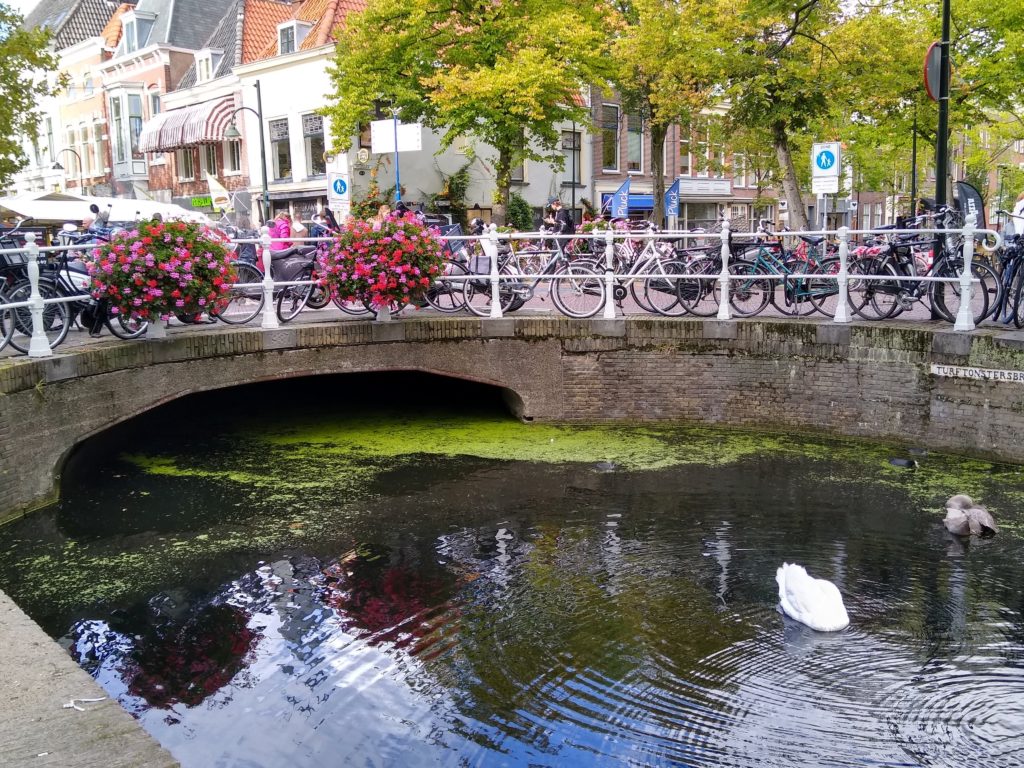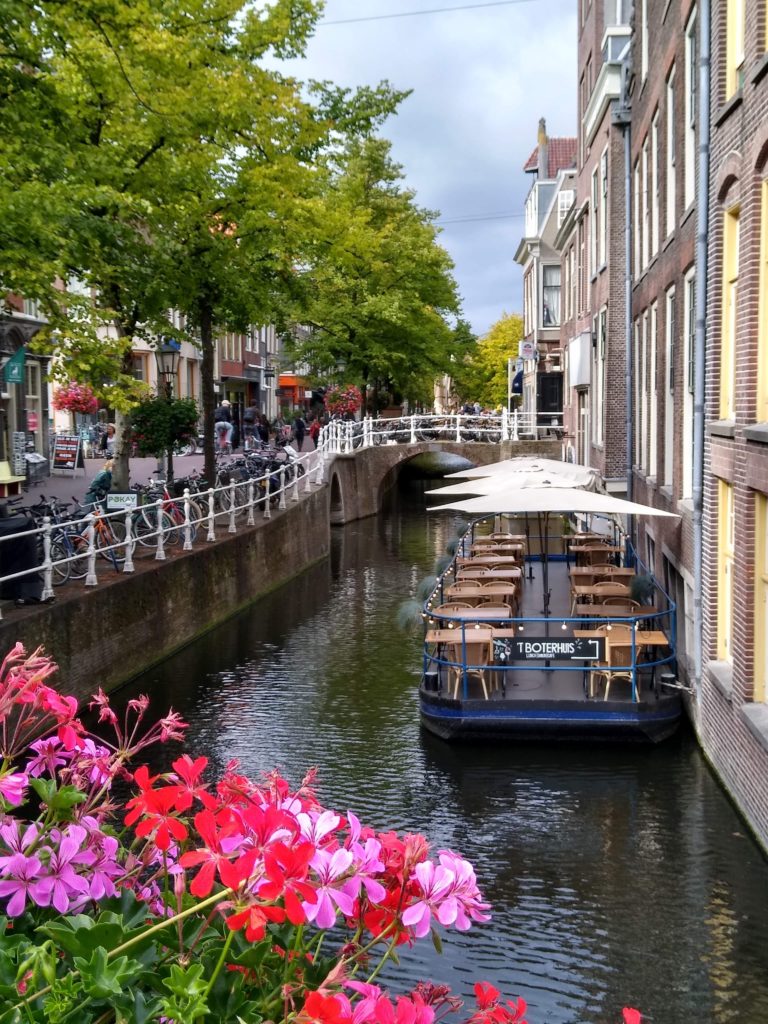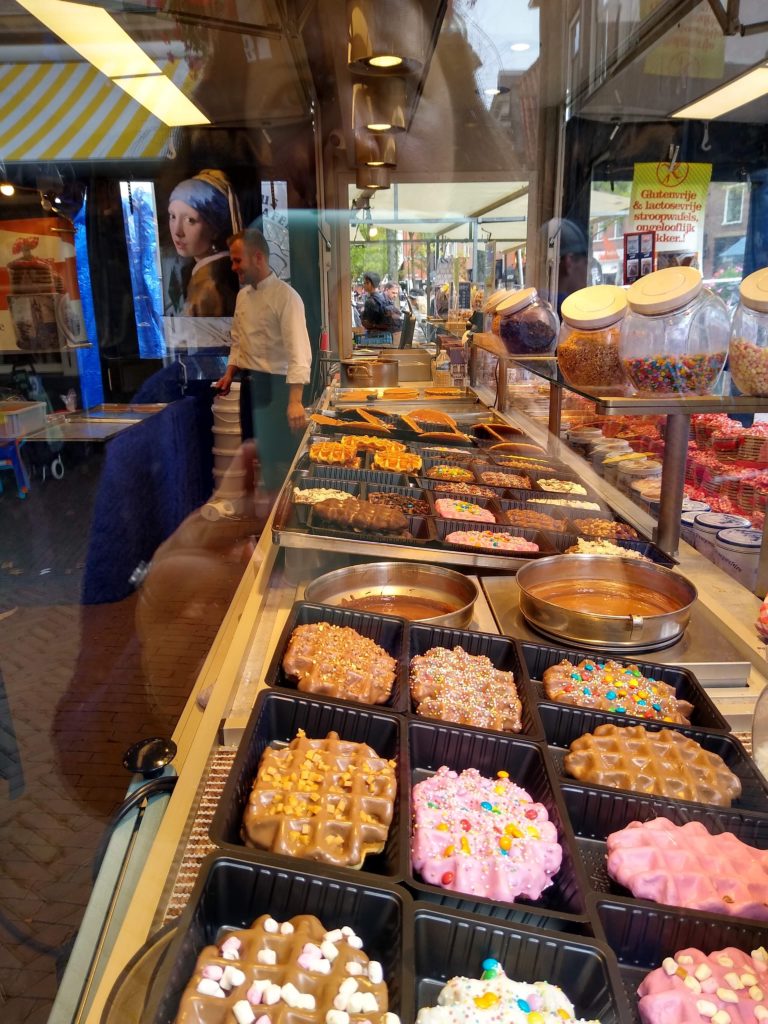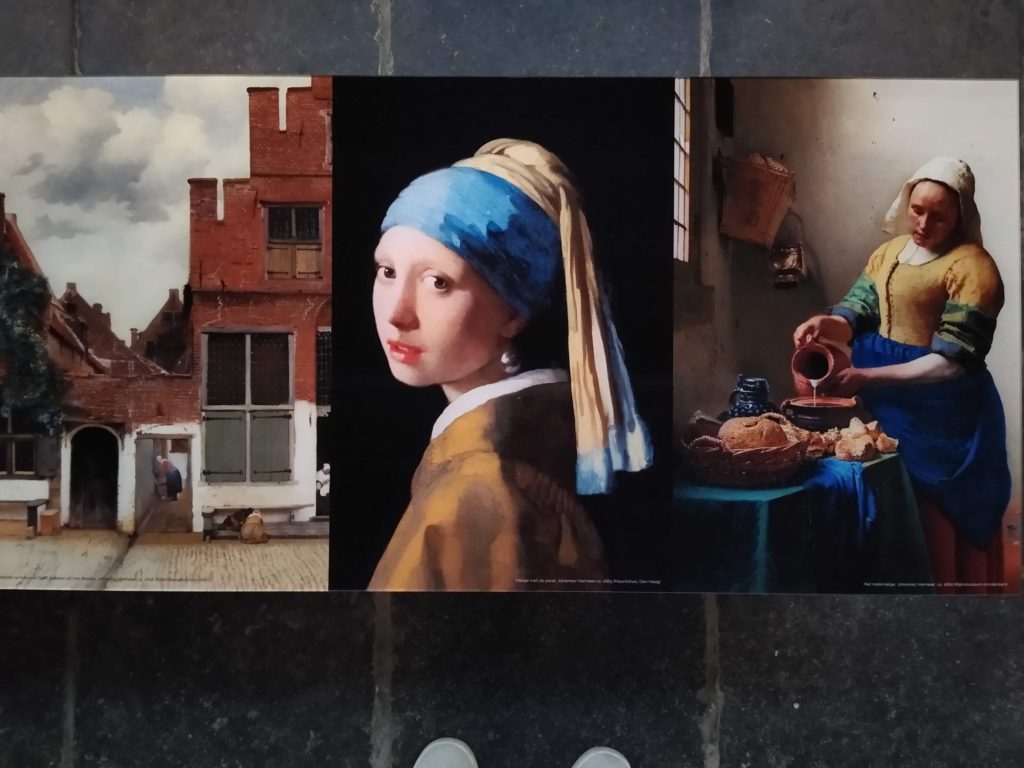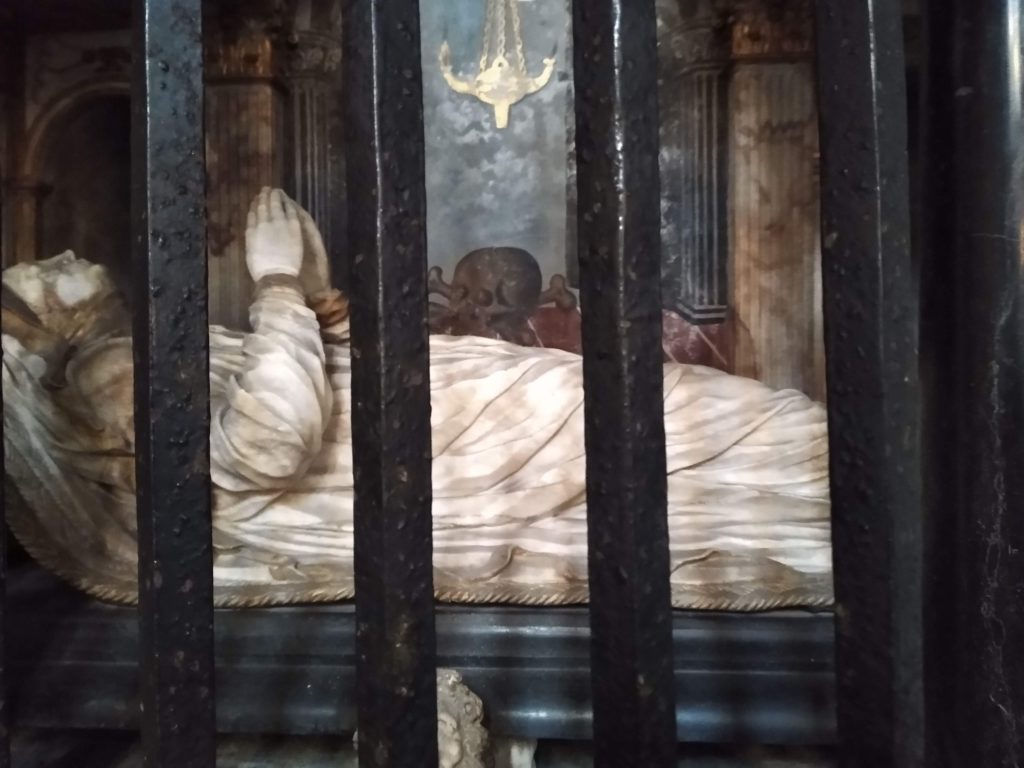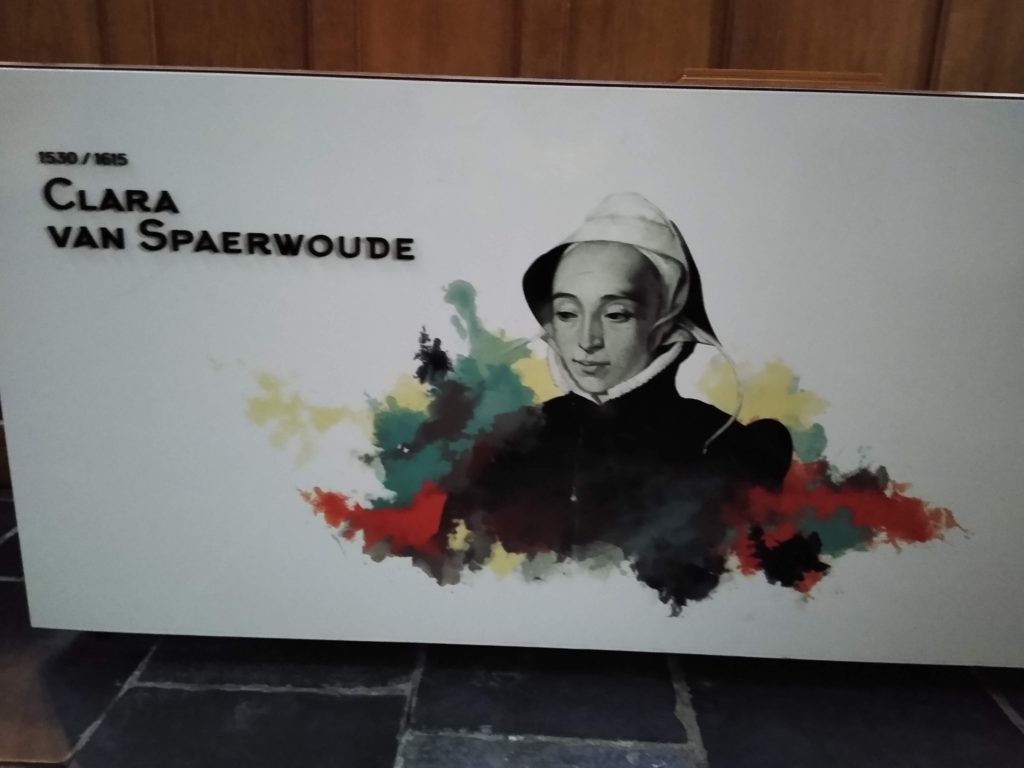We decided to round out our tour of the Netherlands with three nights in Delft. All the guidebooks recommend Delft for its cuteness. It was nice but didn’t live up to our expectations.
Our opinion may have been skewed by some issues with where we stayed. First, I made the mistake of choosing a hotel (the only hotel on the entire six-week journey) that was clear on the other side of town from the train and further from the city center than anywhere else on the trip. Second, we chose to walk with our luggage to get there from the train – a 45-minute odyssey of dragging wheeled luggage on brick walkways. Third, the hotel’s wi-fi was down for the entire duration of our stay. However, we learned the bus route and grew to appreciate the sights along our thirty minute walk into town and back.
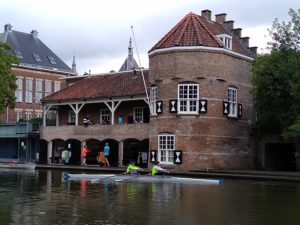
Part of Delft’s cutesy charm is supposed to come from its canals. We found them overgrown with algae and lily pads and, in some cases, littered. The prettiest canal we found was along our hike into town by the university’s boathouse. The water level was higher and there were beautiful weeping willow trees.
The other issue that didn’t make things any better was the weather. It was cloudy and rained on and off most of the time we were in Delft. There were periods of sunshine and we tried to make the most of them.
Despite all these issues, Delft had several things that made up for some of the disappointments. We were in town for the Saturday outdoor market and they were hosting an annual petanque tournament in their main square. And, they have churches – three of them – which made for a nice inside diversion.
Delft Saturday Market
Every Saturday April through October, Delft’s streets are taken over by booths selling everything from Delft porcelain to more typical garage sale items. One specified area is set aside for the food market. We love a good market and we thoroughly enjoyed this one! There were old records (many American) and books (mostly in Dutch), vintage jewelry and toys and more. It is always fascinating to get this kind of look into another culture. We were hoping to find a steal of a deal on porcelain but they know the value and price accordingly. There was one plate I loved but let go because I just couldn’t find it in me to spend €350 to buy it and another €50 to have it shipped.

Not Real Delft 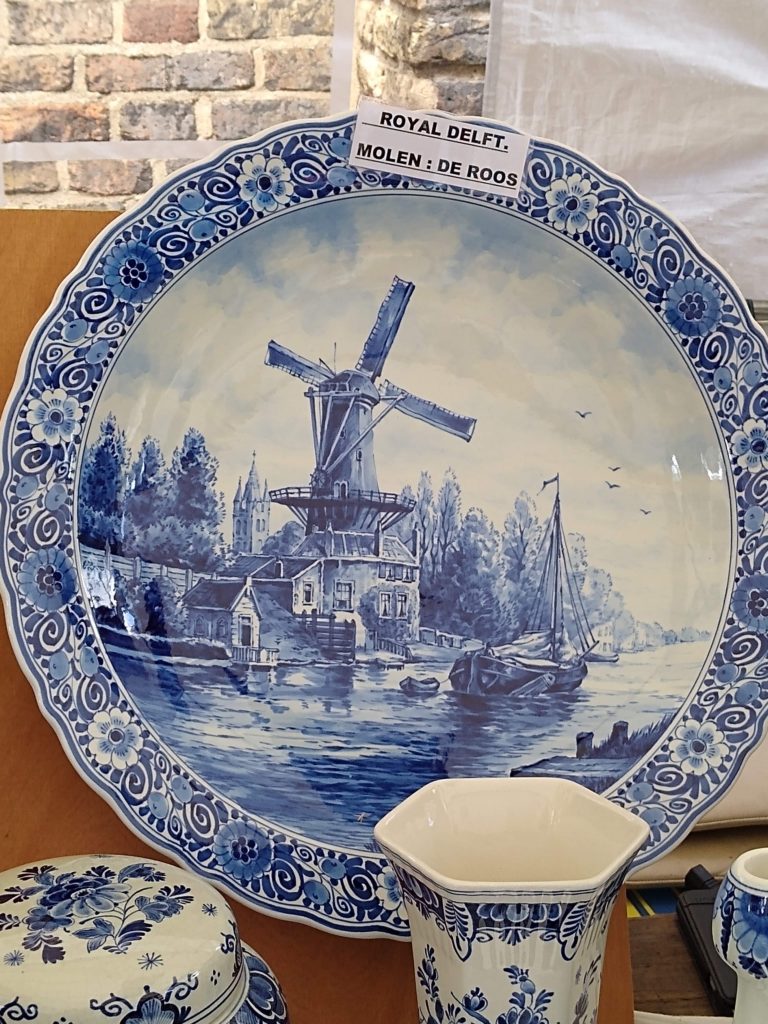
The One I Let Go
We found the food market later in the day but made a picnic dinner out of the goodies there. There was cheese, fresh fruit and vegetables, bakeries, candy, and, of course, waffles and flowers.
But the piece d’resistance was the herring. It’s the thing to eat in The Netherlands and we had only had it on a sandwich. I went for the whole fish. It is served fresh, raw, and covered with chopped onions with pickles on the side. It was actually pretty good.
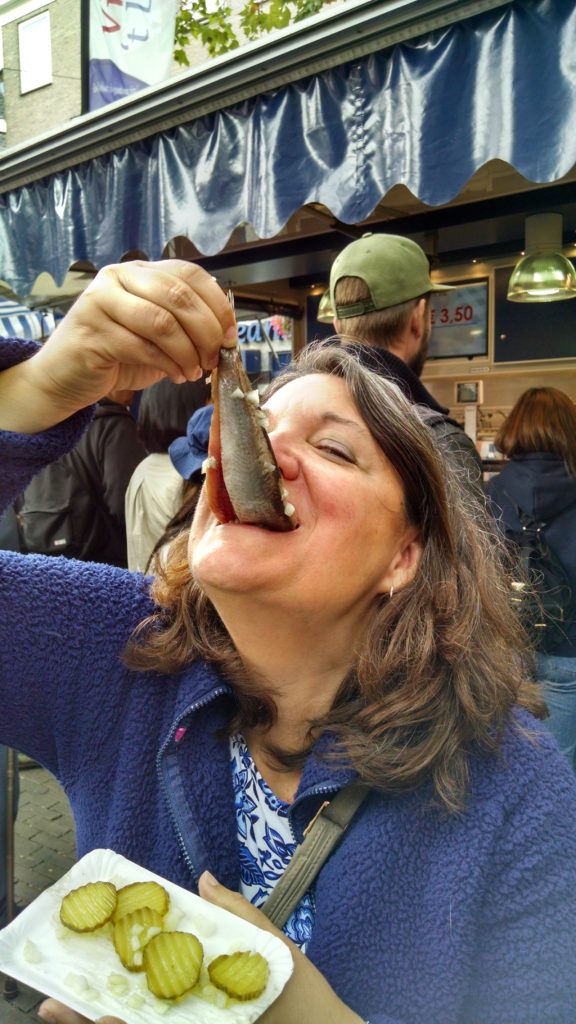
Petanque
The same day as the market, Delft was hosting the annual petanque tournament. Petanque is a game similar to bocce ball. There are two teams of two. One throws out a small colored ball. Then the teams alternate throwing six larger metal balls (three per player) to see who gets closest to the small ball. There is strategy to knock your opponents balls out of the way. It can be intense. This tournament started with 96 teams from all the surrounding countries and lasted all day. When we needed a break from shopping, we would head to the square and watch some petanque.

Measuring Closely 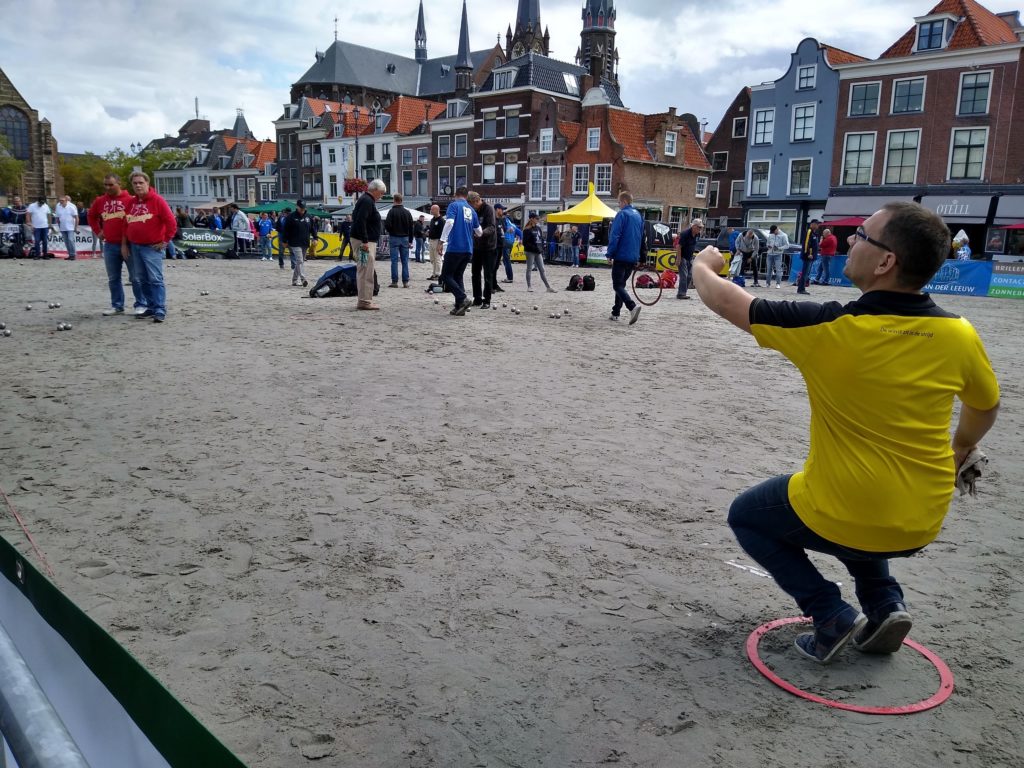
Great Form
Delft’s Churches
Every city in The Netherlands seems to have an Oude Kerk (old church) and a Nieuwe Kerk (new church). Delft is no different. And, like other cities, the old church is only 100 years or so older than the new church which was built in the 1300’s. Both of these are Protestant churches. The third church we visited was the Catholic Church, Saint Hippolytus.
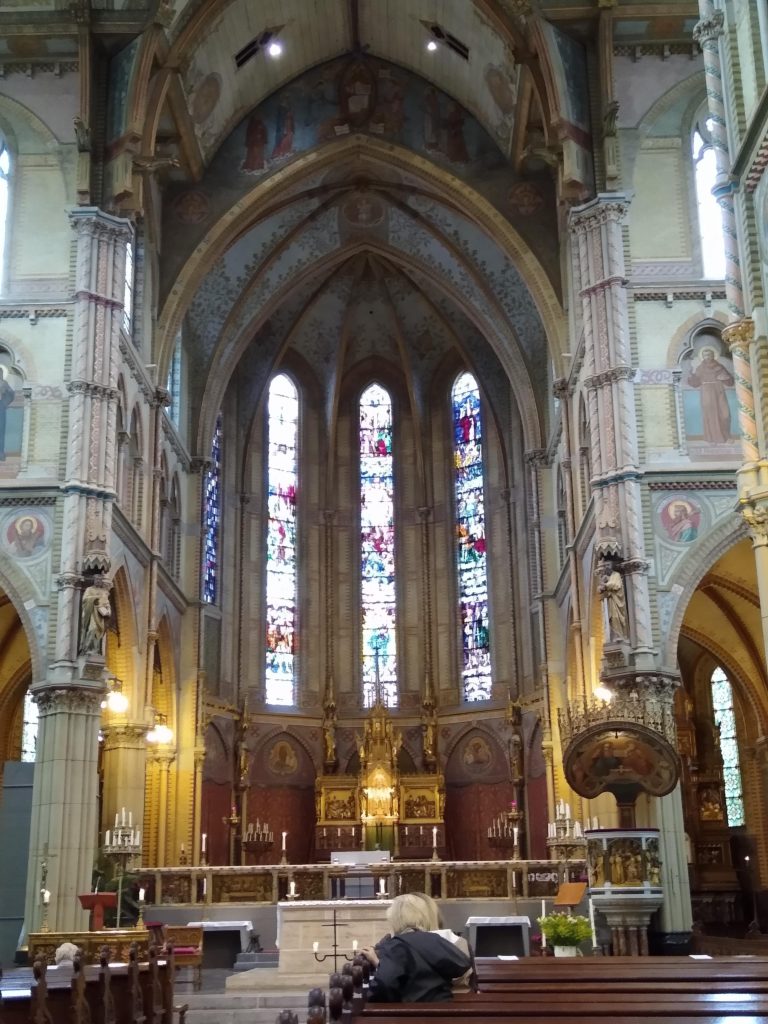
Old Church 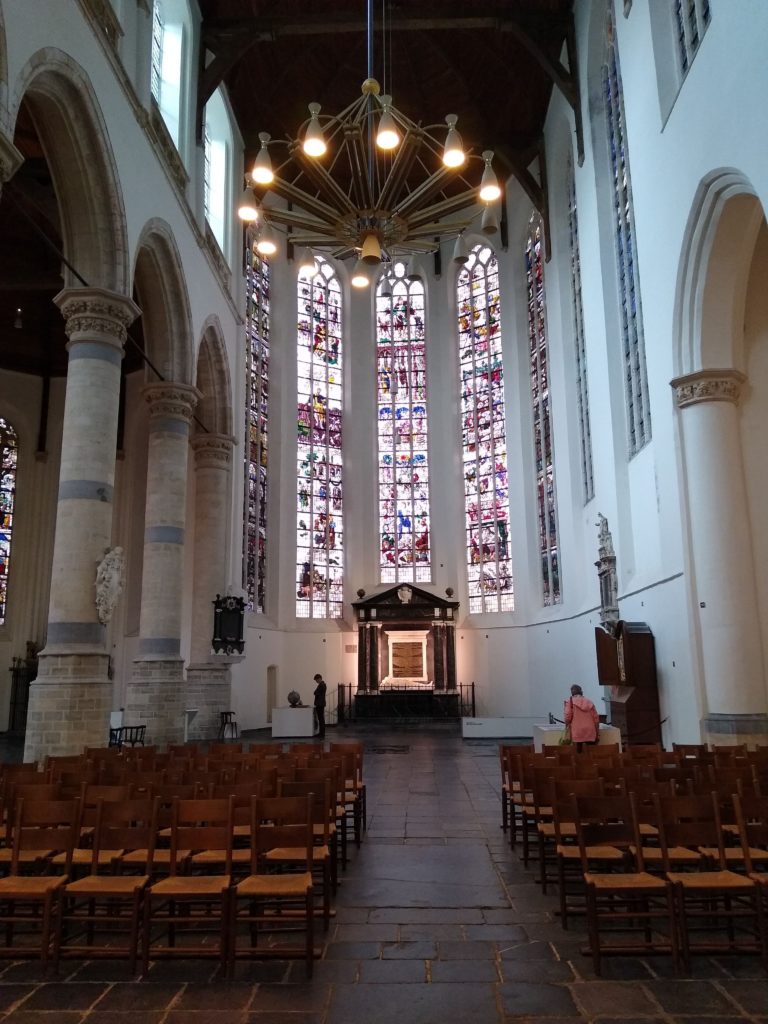
New Church 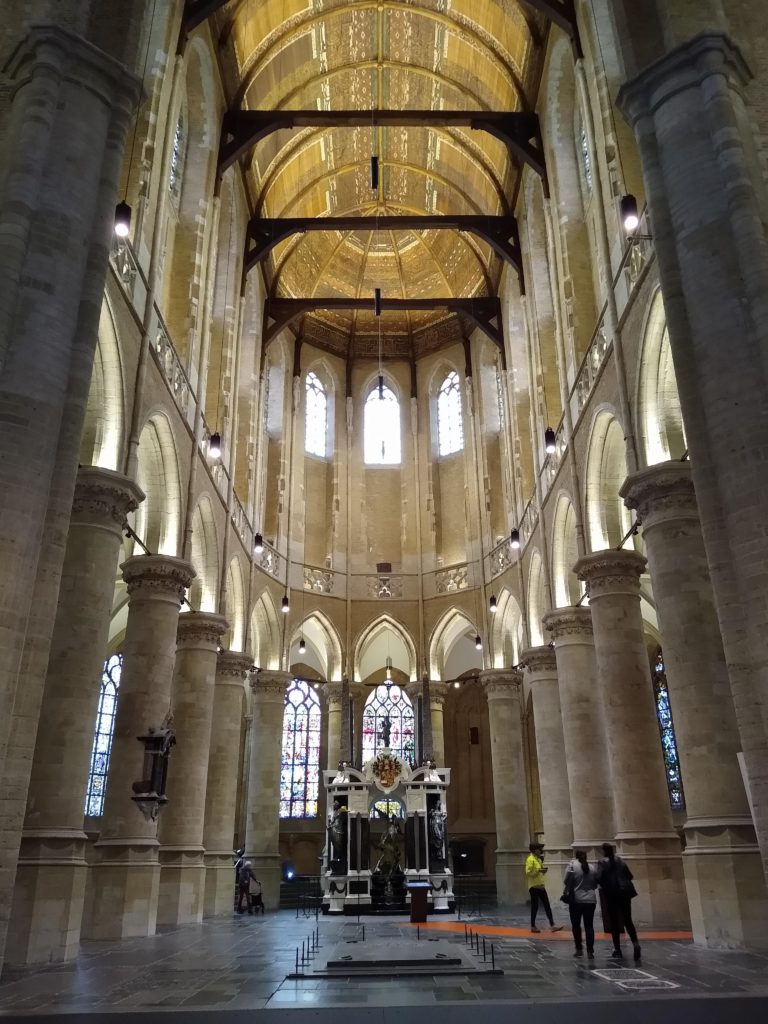
Catholic Church
The tower of Delft’s Oude Kerk also has the distinction of an obvious lean. In fact, it is referred to as Delft’s ‘ Leaning Tower of Pisa.’ It’s hard to capture in a photo but it is definitely there. Both the Oude Kerk and the Nieuwe Kerk contain a combination of historical, artistic, and macabre items.
Oude Kerk
Old Church has the tombs of over four hundred Delft citizens including the painter, Johannes Vermeer. It also has a modern interpretation of the stations of the cross on exhibit. Most interesting to me were the stories of two women. One is a monument to a dead young wife and the other was a story of great charity.
Elizabeth Marnix died shortly after marrying Charles Morgan. He was so in love with her that he commissioned the son of the designer of William of Orange’s mausoleum to design one for her. He never remarried.
Clara van Spaerwoude was from a wealthy family, married into another and was a shrewd investor and developed a huge fortune in her own right. In her will, she set aside scholarship money to allow three young men to attend college for years to come. She also donated money to feed the elderly at a home for the poor. But her most famous gift was the wedding gift which bequeathed three hundred guilders to van Spaerwoude descendents on their wedding day. The fund was so large that it lasted four hundred years.
Niuwe Kerk
New Church is the church of the Dutch royal family. The mausoleum for William of Orange, considered the father of The Netherlands, lies here. The crypt for the royal family is also here but not open to the public (but they do have a scale model on display). You can also climb to the top of the New Church tower for views of the city.
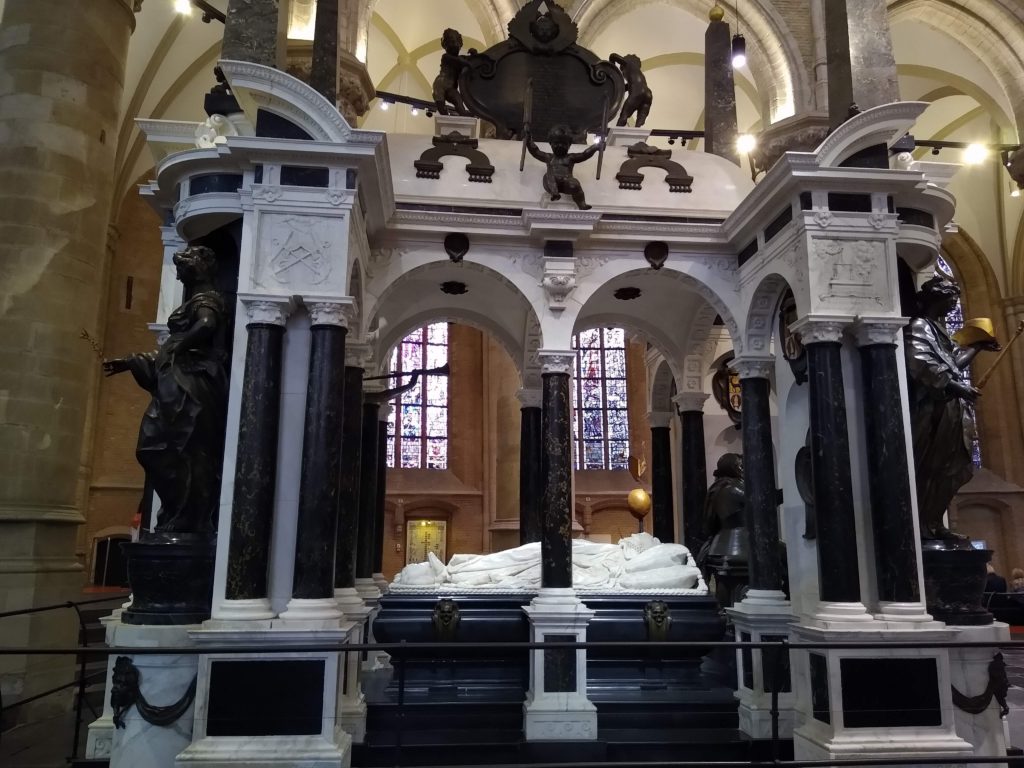
William of Orange Lies Here
We are day tripping to The Hague for more art by the Dutch masters. http://europeyourway.net/the-hague
